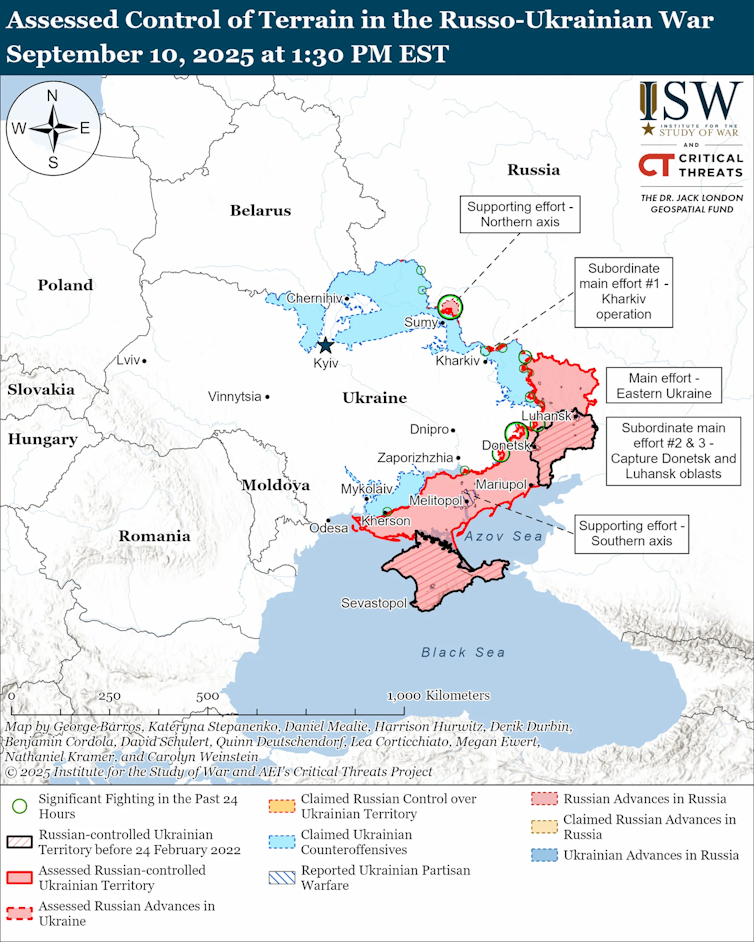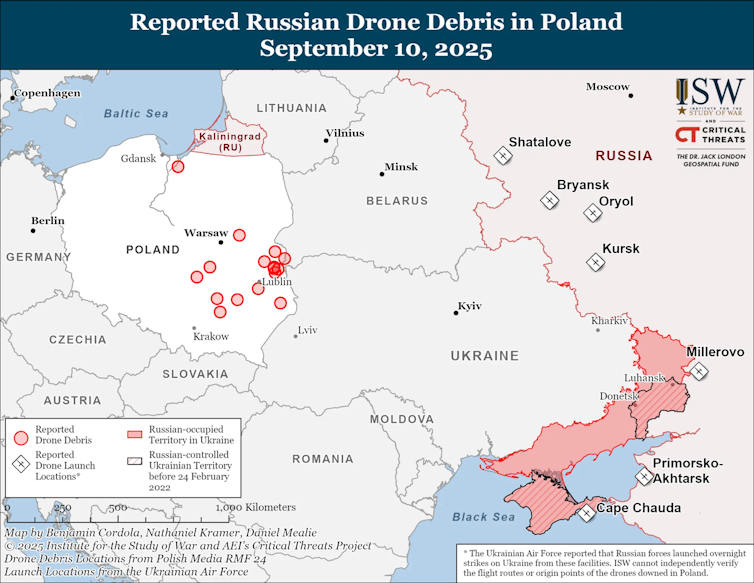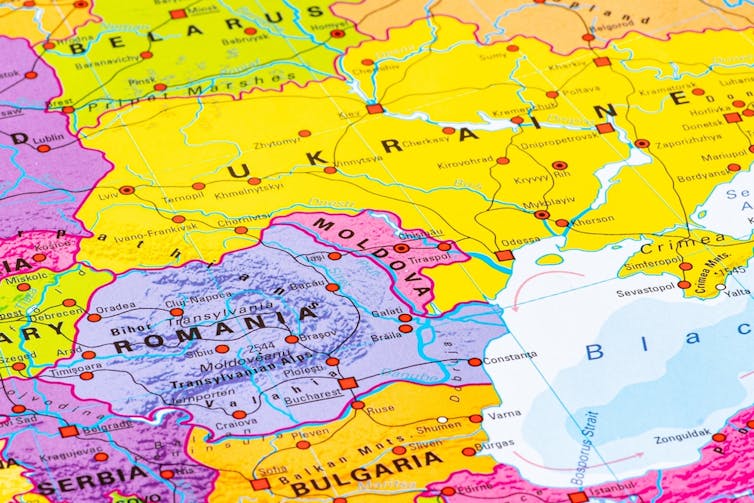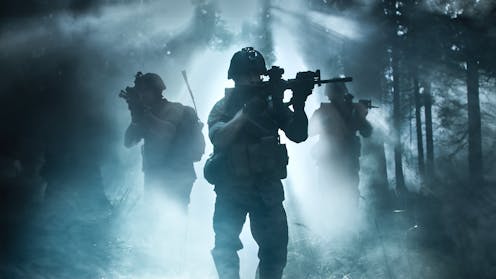Source: The Conversation – UK – By Ruth Emily Sylvester, Research Fellow in Water and Health Governance, University of Leeds
The raw sewage in England’s rivers and seas is not just a story of corporate failure. It’s also a legacy of Victorian sewers – impressive and high-tech in their day, but with inequality and exploitation baked in.
In the summer of 1858, London succumbed to a “Great Stink” as hot weather exacerbated the smell of human waste in and around the River Thames. Along parts of the Thames, sewage was piled six foot deep.
This compelled the Victorians to find a new way of handling the faeces of the world’s largest city. The new Houses of Parliament rushed through legislation and soon commissioned the engineer Joseph Bazalgette to design and build a new sewer system.
Bazalgette’s design was hailed as visionary: a modern network that collected household waste and pumped it to centralised containment points. The shift away from informal sanitation to a formalised system was the bedrock of a public health revolution.
But the system was also a product of its time, and some people and environments benefited more than others. It prioritised the wealthy, and dumped the consequences downstream.
This Victorian legacy infrastructure forms the blueprint of the sewage crisis of the 2020s, in London and across the country. Sewers (often literally the same sewers with the same 150-year-old bricks) still spill untreated waste into rivers when it rains. And, just as in the 19th century, the costs are carried disproportionately by the poor and the environment.
New infrastructure required
Between 1800 and 1850, a third of the population in England moved into urban industrial centres, a shift that ushered in a new era of public health risks from faecal-oral diseases such as cholera. Sustaining this industrial and social revolution required new infrastructure. But sewers built in London and elsewhere were a response to, and a reproduction of, the social arrangements of the industrial period.
Their core design values were to protect the health of the labouring workforce and to secure the lifestyle of wealthy people. Rich neighbourhoods were the first to receive sewer connections, and the business of sewer building became a lucrative investment for the upper classes.
The pipes themselves were designed to both drain rainwater and transport sewage. During periods of heavy rainfall, the combined contents would flush out through pressure relief valves – known as combined sewer overflows – into the Thames and its tributaries. In 2024, these same overflows dumped sewage into England’s watercourses for a total of 3.6 million hours.
Initially, treatment works at Beckton and Crossness were simply discharge points that continued to release raw sewage into the Thames, only further downstream and at the ebb of the tide, blighting many working-class residents of east London.
My research with Anna Mdee and Paul Hutchings found that this also applies elsewhere in England. For instance by the mid-19th century, the city of Bradford became known as “the wool capital of the world”. Yet the Bradford Beck, the river at this city’s heart, was a hotbed of sewage and disease, even after sewers were built in the 1860s. Working class communities living close to its banks were most affected. Tragically, at this time, only 30% of children born to mill workers lived beyond the age of 15.
It was not until the Princess Alice disaster in 1878, when more than 600 people drowned after a passenger ferry sank in a stretch of the Thames near sewage outlets, that politicians called for a better solution for human waste treatment.

wiki / Illustrated London News 1878, CC BY-SA
Settling tanks were introduced, which separated the liquid and solid elements of sewage, yet both components were disposed of in rivers or seas via pipes or boats transporting the solids out and dumping in deeper waters.
Left to the market
Progress on connecting households to sewers was very uneven. As industrialisation accelerated in London and across England, local governments became ill equipped to address the emerging complexities of sanitation, and often left it to private companies and the market instead.
In Birmingham, for instance, the town centre and wealthy suburbs were connected to sewers in the 1850s, while working-class neighbourhoods had to wait until the 1870s and 1880s.
By the 1890s, wealthy people enjoyed running water and fully plumbed bathrooms, or water closets, containing raised cisterns with the classic Victorian chain pull. Some houses had multiple WCs including separate facilities in servant quarters. However, many working class and rural households still lacked them well into the mid-20th century.
Profits flow upwards
The way sanitation is financed has always reflected inequality. In the 19th century, wealthy city dwellers got sewers first, while upper-class investors and private companies made money from waste. The same pattern persists today. Under England’s privatised water regime, profits flow upwards – not just to CEOs but now to international investors and shareholders. Thames Water, for instance, has been part-owned in turn by a German energy firm, an Australian investment bank and now a Canadian pensions group.
Since privatisation in 1989, these inequalities have been exacerbated. Water companies are highly profitable, yet rivers are still used to dump sewage.
Read more:
‘Noisome stinking scum’: how Londoners protested river pollution in the 1600s
This is why creating a new regulator, as proposed in a recent independent review, or renationalising the sector are not enough: the social hierarchies and environmental exploitation of Victorian England are still ingrained in the pipes themselves.
For centuries, nature was seen as a treatment plant, with rivers, lakes and seas absorbing our faeces. This is no longer acceptable.
Sewers built in the 19th century are failing 21st-century England. Just as Joseph Bazalgette reimagined sanitation for the Victorian era, we need an equally bold vision today – one that stops exploiting both rivers and people.
Don’t have time to read about climate change as much as you’d like?
Get a weekly roundup in your inbox instead. Every Wednesday, The Conversation’s environment editor writes Imagine, a short email that goes a little deeper into just one climate issue. Join the 45,000+ readers who’ve subscribed so far.
![]()
Dr Ruth Emily Sylvester has previously received funding from EPSRC for her PhD studies. This article is partly based on findings and outputs from her doctoral research.
– ref. From the Great Stink to the modern sewage scandal: why 19th-century sewers are failing 21st-century England – https://theconversation.com/from-the-great-stink-to-the-modern-sewage-scandal-why-19th-century-sewers-are-failing-21st-century-england-263364










